There’s a new kind of Covid-19 shot coming to a pharmacy or clinic near you.
The US Food and Drug Administration and US Centers for Disease Control and Prevention signed off on updated boostersthat target the original strain of the coronavirus as well as the Omicron subvariants BA.4 and BA.5. The hope is that these shots will improve protection against the currently circulating viruses that cause Covid-19.
Here’s everything you need to know about the new bivalent boosters and who can get them.
How are these new bivalent vaccines different?
The new bivalent vaccines carry instructions to help our cells make defenses against two strains of the virus that causes Covid-19. The shots direct cells to make antibodies that bind to certain parts of the spike proteins from both the original strain of the SARS-CoV-2 virus and the BA.4 and BA.5 Omicron subvariants, which share an identical spike.
BA.4 and BA.5 are the dominant variants in the United States, where there’s an average of 91,000 new infections each day.
“These are vaccines that are made, manufactured and delivered identically to the Covid mRNA vaccines that most of us have already gotten,” said Dr. Gregory Poland,who leads the vaccine research group at Mayo Clinic in Rochester, Minnesota. “In a sense, you’ve just changed the blueprints.”
Having twice the blueprints doesn’t mean you’re getting twice the dose of active ingredients, though.
“The total mRNA content – the business part of the vaccine – that leads to the immune response is the same amount,” said Dr. William Gruber, senior vice president of vaccine research and development at Pfizer, which makes one of the updated vaccines.
Pfizer’s booster is a 30-microgram dose that contains 15 micrograms of mRNA against the ancestral strain and 15 micrograms against the BA.4 and BA.5 variants. It is authorized for people as young as 12.
Moderna’s bivalent booster is a 50-microgram dose, with 25 micrograms of mRNA designed to fight the ancestral strain of the coronavirus and 25 micrograms of mRNA designed to fight the BA.4 and BA.5 variants. It’s authorized for people 18 and older.
The earlier mRNA shots are still the first two shots a person will get, but they’re no longer authorized for use as boosters in people age 12 and older.
Where can I get an updated Covid-19 booster?
Millions of vaccines are now shipping to tens of thousands of sites across the country. These include community health centers, health departments and pharmacies.
CVS and Walgreens have started offering the shots. Both chains are scheduling appointments online, and say more slots will be added as they get shipments of the vaccines.
The Biden administration expects appointment availability to ramp up over the first several days, with broad availability in a few weeks. People will be able to find locations at Vaccines.gov.
“You’ll start seeing some places start giving some shots in arms over the weekend, but very relatively few because [of the] Labor Day weekend. And my expectation is over next week, or certainly over the next 10 days, you’re going to start seeing these bivalent vaccines become widely available across the country,” Dr. Ashish Jha, who leads the White House Covid-19 Response Team, told CNN.
As with past Covid-19 vaccines, these shots will be available free of charge. But they may be some of the last Covid-19 freebies from the government, which has said it’s going to start commercializing treatments and vaccines this fall.
Who should get an updated booster?
Americans ages 12 and older are recommended get the new boosters as long as they’ve already had their primary series of vaccines.
Experts say everyone needs one as protection from both vaccination and infection wanes considerably over time and in all age groups.
“I do believe there will be benefit, essentially for everyone, with clearly more benefit for the elderly and those who have underlying conditions,” said Dr. Anthony Fauci, director of the National Institute of Allergy and Infectious Diseases, said on CNN on Friday.
Adults age 18 and older can get either a Pfizer or Moderna shot. Adolescents ages 12 and older can get an updated Pfizer shot.
When should I get an updated booster?
You should wait two months after your last vaccine dose to get an updated booster.
For those who have recently recovered from a Covid-19 infection, the CDC recommends waiting at least until the illness has passed and a person is no longer contagious. For best results, it may be better to delay a booster for at least three months after symptoms started. Infection itself probably already acted like a booster; studies have shown that people have a relatively low risk of getting sick again for about three months after they recover.
You may not want to wait as long as three months if Covid-19 levels are already high in your community or if you are reduced immune function.
“Myself as an example, I was vaccinated, doubly boosted and infected, and I will be getting the updated BA.4/5 bivalent vaccine within three months of my having gotten infected, exactly the way the FDA has authorized and the CDC has recommended,” Fauci said.
Can people get other vaccines at the same time as the updated booster?
US health officials have recommended that providers offer the seasonal flu vaccine and Covid-19 vaccines at the same visit if a patient is eligible for the vaccinations. This upcoming fall and winter could host a high spread of flu and Covid-19, and administering both vaccinations at the same time has been found to be safe.
The government is also preparing to launch a campaign that will urge Americans to get their annual flu shot along with an updated Covid-19 booster.
One vaccine for which there are no data on administering it at the same time as others is the Jynneos monkeypox vaccine, according to the CDC’s guidance. The agency recommends that people, particularly adolescent or young adult men, might consider waiting four weeks after receiving monkeypox vaccination before receiving a Moderna, Novavax or Pfizer/BioNTech Covid-19 vaccine, “because of the observed risk” for myocarditis, inflammation of the heart muscle, or pericarditis, inflammation of the tissue surrounding the heart.
The CDC adds that monkeypox vaccination “should not be delayed” due to recently receiving a Moderna, Novavax or Pfizer/BioNTech Covid-19 vaccine.
When can younger children get an updated booster?
Children ages 5 through 11 can still be boosted with the older, single-strain vaccines.
Vaccine manufacturers are updating boosters for younger children now. Pfizer said it’s retooling its shots for children ages to 5 through 11 and will ask the FDA for authorization of those updated boosters in early October. It’s working with the FDA to update vaccines for children ages 6 months through 4 years.
Until those are ready, the best way to protect babies, toddlers and gradeschoolers is to get eligible family and friends an updated shot.
Can immunocompromised people get an updated booster?
Yes, but that’s not all. If a health condition or a medication has lowered your immune function, the CDC recommends a two-pronged approach to boost your protection against Covid-19 – vaccination and preventive treatment with a type of passive immunity called Evusheld. Passive immunity is when antibodies are made in a lab and then given by injection or infusion to help people who can’t make enough of this protection on their own.
Evusheld can be taken every six months and is available for immunocompromised people ages 12 and up. It requires a doctors prescription, but the treatment itself is free. The CDC estimates 7 million people may be eligible to take Evusheld, but most haven’t gotten it because they don’t know about it.
If you need Evusheld, you should wait at least two weeks after getting a Covid-19 vaccine to take it. But after a person has taken Evusheld, there’s no waiting period for getting an updated booster.
Are the updated Covid-19 boosters safe?
A recent review of adverse events after mRNA booster vaccinations in adults the United States found that side effects were less common after booster doses than after second doses of the vaccine, and most were mild. About 1 in 8 adults reported a headache, fever or pain after a booster. In children and teens, commonly reported side effects after boosters were pain at the site of the injection, fatigue, headache and muscle aches.
Very rarely, mRNA vaccines can cause myocarditis, or swelling in or around the heart. After more than 80 million booster doses given in the United States, the government safety surveillance systems received 37 verifiable reports of myocarditis. Most of these were in men.
The highest rates of myocarditis in adults were in younger men – ages 18 to 24. For every million booster doses given to men this age, the CDC expects about that about will have myocarditis. For adolescents, the rate is slightly higher but still extremely low: about 11 cases of myocarditis for every million doses.
Dr. Peter Marks, who directs the FDA’s Center for Biologics Evaluation and Research, said that to minimize this risk, officials are directing that the vaccines be given at least two months after a previous dose.
“It seems to be associated when they’re given closer to one another,” he said.
How do we know the updated Covid-19 vaccines work?
The evidence for these updated vaccines is a bit different than what was behind earlier versions. These are the first Covid-19 vaccines authorized for use in people after being tested only in mice, following much the same process used each year when annual flu shots are updated.
The FDA allowed companies to submit data from animal tests in order to speed these shots to the public. Studies in people are underway. FDA’s Marks said he expects that it will be a month or two before data on humans is available.
Officials say urgency with these boosters is warranted going into the fall, when Covid-19 is still circulating at high levels and influenza is expected to make a return. But some vaccine experts feel that animal studies don’t provide sufficient evidence for these vaccines at this stage in the pandemic.
“You’re asking people to get a new product for which there’s no data,” Dr. Paul Offit, who directs the vaccine education center at Children’s Hospital of Philadelphia, told CNN. “Mice data are not adequate to launch 100-plus-billion-dose effort.”
Offit says it makes sense to use data from animal studies for updates to annual flu vaccines because we’ve used those shots for decades, and we understand what biomarkers to look for when gauging whether they work. These so-called correlates of protection are not as well understood for the Covid-19 vaccines.
It’s not just the shots that are different, Poland said. At this point in the pandemic, our immune systems are, too. Nearly all Americans have been infected with the coronavirus, vaccinated or both. Some people have had four or five doses of vaccine.
“So if you say to me, ‘can you assure me that getting dose five or dose six of this new vaccine in the background of having received these previous doses is absolutely safe?’ I’d say ‘no, I can’t.’ We’re extrapolating. And I think we ought to be clear about that,” Poland said.
FDA officials point out that animal studies weren’t the only data they reviewed to make their decision. They considered two other lines of evidence.
The first is the vaccines’ track records. The same basic vaccines have now been given to hundreds of millions of people around the world. They have been shown to be extremely effective at preventing severe disease and death from Covid-19. Risks associated with mRNA vaccination are very, very low.
The second line of evidence comes from bivalent vaccines that may soon be used in Europe and Canada.
Earlier this year, Pfizer and Moderna presented an independent panel of experts who advise the FDA with data on a bivalent vaccine designed to target the original strain of Omicron, BA.1. That data showed that the vaccines boosted antibody responses and were well-tolerated. Other countries have authorized these vaccines, but they will not be available in the US.
The BA.1 strain isn’t circulating any more, and the FDA asked the manufacturers to update their US shots to include BA.4 and BA.5 instead. Some evidence suggests that the BA.4 and BA.5 strains generate a stronger immune response than BA.1, which is another reason officials wanted to include them in the updated shots.
FDA Commissioner Dr. Robert Califf said he understands that people may want to know more, but he’s confident that these vaccines are safe and effective.
“It’s fair for people to raise questions. But this really is the best consensus that we have among the experts that this is the best way to go. … It’s just painful to see people dying unnecessarily when there’s a free treatment that would prevent their death,” he said.
“I will be at the front of the line at the pharmacy getting my vaccination,” said Califf, who will turn 71 next month. “I’m very confident about this.”
In the past, tests of variant-specific vaccines have had lackluster results. It’s hard to know how effective these bivalent vaccines could be.
In a recent preprint study, published ahead of peer review, scientists tried to estimate this with a meta-analysis, or a study of studies. The gathered estimates of antibody levels after booster doses against the ancestral strains, as well as against specific variants, and tried to use those levels to predict how well the shots would work.
They found that people got the biggest benefits from getting boosted, period. A booster against the ancestral strain increased neutralizing antibodies 11-fold. The scientists estimated that would increase a person’s protection against symptomatic infection over the next six months from 50% to 86.5%.
Variant-specific boosters worked a little better, but the difference wasn’t dramatic. After those shots, protection against symptomatic infection over the next six months rose to 90.2%, just a 4.6% increase.
Why were the shots updated?
The Covid-19 vaccines were due for an update.
As the coronavirus has been circulating, it has changed a lot. These changes have helped it slip past the antibodies that we made against older versions of the virus and older versions of the vaccine. As a result, it has gotten better at causing reinfections and breakthrough infections.
The hope is that giving people updated vaccines will improve their ability to fight off the infection and shore up protection against severe disease that causes hospitalization or death.
There is also some hope that updated boosters may slow the spread of the virus – and thus the speed at which vaccine-busting variants appear.
Get CNN Health's weekly newsletter
- Sign up here to get The Results Are In with Dr. Sanjay Gupta every Friday from the CNN Health team.
The coronavirus is changing at blistering speed. In a meeting with FDA vaccine advisers last June, Trevor Bedford, a professor of epidemiology and biostatistics at Fred Hutchinson Cancer Reserach Center in Seattle, compared the speed of evolution of the viruses that cause Covid-19 to that of the viruses that cause influenza.
Among the faster influenza viruses, he said, it takes about three years for a new strain to emerge and start showing up in testing in significant numbers. Among the variants of the virus that causes Covid-19, the Delta variant pulled off this feat in a year. Omicron did it in three to four months.
So there is genuine concern that without something to slow transmission of the infection, we’ll be forever stuck in catchup mode, waiting for faster and potentially more dangerous variants to emerge.
CNN’s Elizabeth Cohen, Jacqueline Howard and Naomi Thomas contributed to this report.
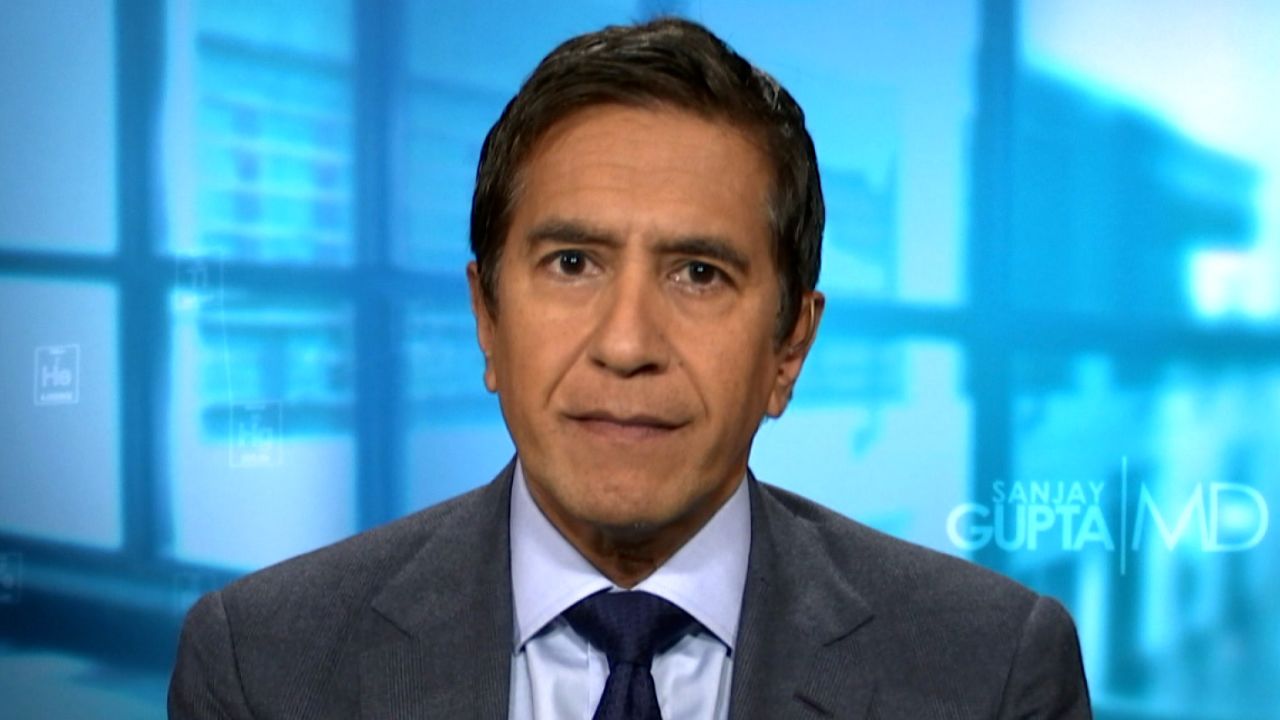















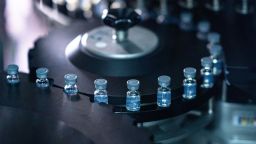
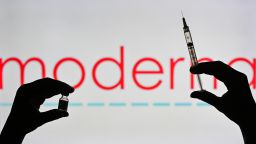
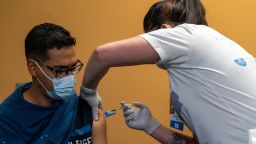
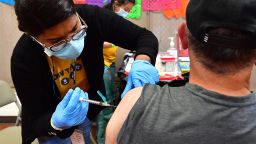

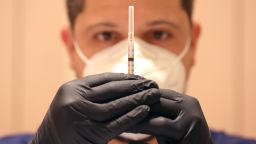
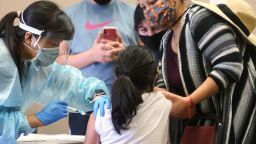

![Dr. Nita Patel, Director of Antibody discovery and Vaccine development, lifts a vial with a potential coronavirus, COVID-19, vaccine at Novavax labs in Gaithersburg, Maryland on March 20, 2020, one of the labs developing a vaccine for the coronavirus, COVID-19. (Photo by ANDREW CABALLERO-REYNOLDS / AFP) / The erroneous mention[s] appearing in the metadata of this photo by ANDREW CABALLERO-REYNOLDS has been modified in AFP systems in the following manner: [Gaithersburg] instead of [Rockville]. Please immediately remove the erroneous mention[s] from all your online services and delete it (them) from your servers. If you have been authorized by AFP to distribute it (them) to third parties, please ensure that the same actions are carried out by them. Failure to promptly comply with these instructions will entail liability on your part for any continued or post notification usage. Therefore we thank you very much for all your attention and prompt action. We are sorry for the inconvenience this notification may cause and remain at your disposal for any further information you may require. (Photo by ANDREW CABALLERO-REYNOLDS/AFP via Getty Images)](https://media.cnn.com/api/v1/images/stellar/prod/201227154630-novavax-covid-vaccine.jpg?q=x_2,y_88,h_898,w_1596,c_crop/h_144,w_256)


